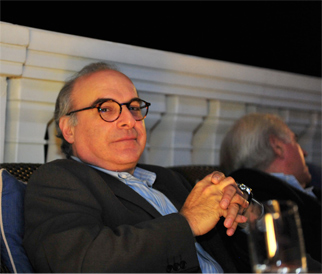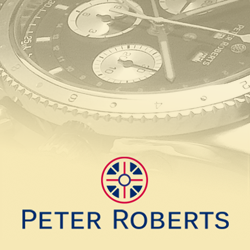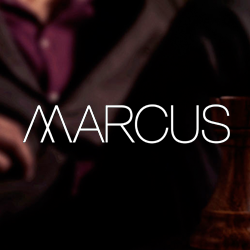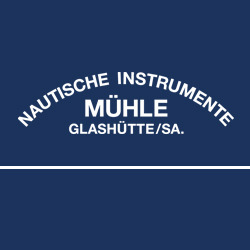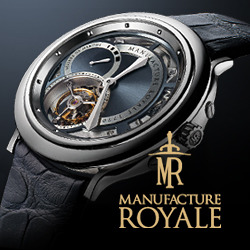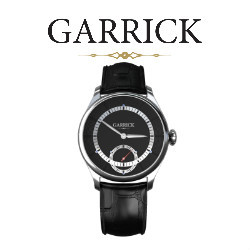New watch companies? They’ve been arriving faster than pre-fab boy bands, illegals at Dover and reality TV shows. And they’re just about as welcomed, the vast majority being little more than exercises in badge-engineering. The bigger the fanfare at the launch, the more likely that the new brand is mere bling-bling – gem-encrusted crud destined for the wrists of footballers. Or their wives. So what about the opposite approach? Is a subtle, tasteful launch possibly a sign of the refinement and taste? If ‘Yes’, then De Bethune is a class act indeed.
At the 2003 Basel fair, De Bethune exhibited in a quiet corner of a smaller hall, end of the corridor, turn left. You had to go looking for it, had to be curious. De Bethune? Who the wha’? In an exhibition bursting with spurious brands with deliciously antique-sounding, utterly bogus names, any brand named ‘De’-something-or-other might be just another pretender.
It turns out that the elegantly-attired gentleman holding court in a room at the back of the stand is company founder David Zanetta, described as ‘a worthy and well-known consultant of some of the most prestigious watch collections in the world.’ More accurately, he’s a veteran mover-and-shaker in high-end horology, but his discretion means underplaying his achievements, among them assisting in the recent re-birth of one of the grand old names in watchmaking and acting as a consultant for one of the world’s most important auction houses.
If Zanetta provides the knowledge and experience to ensure that the form and image are suitably ‘haute horological’, De Bethune’s Technical Managing Director guarantees that the credibility follows through to the movements. Denis Flageollet was professor at the watchmaker’s school in Le Locle and has more than twenty years’ experience in creating over 120 ‘haute de gamme’ watches. After working in restoration alongside Michel Parmigiani, Flageollet was involved in the development of watches for Breguet (including the Sympathie), Omega, Chopard, Cartier and others.
With these pedigrees behind the brand, the identity of De Bethune could have smacked of mere hybridism. But Zanetta and Flageollet have adhered to the De Bethune motto, ‘L’Art Horloger au XXI Siecle’ (The Art Of Watchmaking In The XXIst Century’), by creating modern watches that are wholly original yet refer back to past greats…without allowing the observer to pinpoint the specifics. This will surprise no-one who has seen and handled the De Bethune watches: the distinctive lug designs, clean dials, elegant cases and assorted, respectful nods to history will never allow these to be mistaken for the products of any other marques.
Denis (l.) and David
As for the family ‘look’, Zanetta told QP, ‘Even my most complicated watches must be legible at a glance,’ not one of the De Bethunes requiring the wearer to study the dial for an inordinately long interval in order to learn the basic time of day. For De Bethune, even the colour of the numerals has been selected to offer superior legibility. Zanetta clearly has little respect for the current generation of upscale timepieces overloaded with complications such that the render the hands’ positions indecipherable.
One quick glance at the single-button chronograph, for example, and you’re forgiven for thinking that it’s not a chronograph at all, but a simple hours-minutes-seconds timepiece. It’s a welcomed break from dials cluttered with a plethora of retrograde hands, myriad sub-dials, a surfeit of graphics. This is 20th Century minimalism and 19th Century classicism blended with 21st Century pragmatism.
Zanetta has located the House of De Bethune in La Chaux L’Auberson in the Swiss Jura, in the heart of the watchmaking region. The atelier is home to seven watchmakers who take rare, raw movements and refine them to within a micron of their lives. The addition of complications, all adjustments and all finissage take place in-house, De Bethune using exclusive movements from carefully chosen suppliers, which are then entirely hand-assembled and hand-decorated. De Bethune hopes to provide its own wholly proprietary calibres ‘in a short time.’
Whatever course they take, De Bethune watches will always be exclusive. As high prices no longer ensure exclusivity – one of today’s particularly ‘hot’ brands, with watches starting above £4000, is said to produce 35,000 pieces per annum – De Bethune will guarantee that its clients enjoy their frisson of individuality by restricting production. ‘Within five years, we expect to reach production of a maximum of 1200 pieces per year,’ according to De Bethune’s Angela Landone.
De Bethune’s catalogue consists primarily of round-cased watches 42mm in diameter, all bearing the distinctive ‘ogival’ lugs and cases made from gold or platinum; there are also rare pieces including a gold and platinum pendulette pocket watch with imperial jade desk stand. The range begins with a basic automatic revealing hours, minutes and seconds, and the price for this entry-level De Bethune timepiece is 12,000 euros. Other pieces include: the Montre Simple Fuseau, manual wind and showing just hours and minutes; Chronographe Monopoussoir, a single-button chronograph with two sub-dials; GMT-168, a dual-time zone watch with 7-day power reserve; a minute repeater.
The 2003 launches? De Bethune unveiled a pair of gorgeous chronographs, dressy yet functional: the Perpetual Calendar with ‘big date’ and split-seconds chronograph and a new single-button Chronograph, with ultra-thin case and the aforementioned, deceptively simple dial. Its chronograph element is restricted to a 45-minute counter at the 6 o’clock position.
At present, De Bethune watches are only available in Switzerland and Italy. But UK parties are known to be interested, so they may arrive on Bond Street sooner rather than later. Let’s hope so: De Bethune has taken the concept of ‘elegance’ a huge step further away from bling-bling.
(QP Issue 3, 2003)
© Ken Kessler 2003
